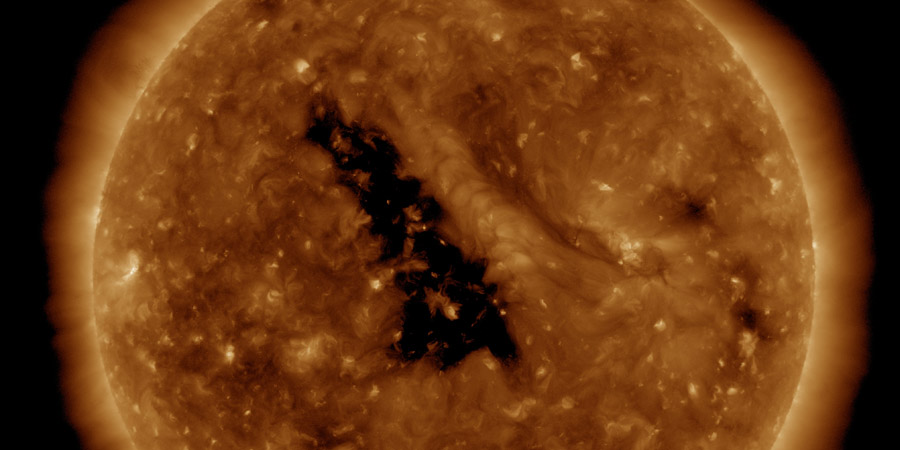Coronal hole faces Earth
Wednesday, 31 October 2018 17:42 UTC

It is starting to become a returning topic here in the SpaceWeatherLive news section: coronal holes that face our planet. Today it's one of those days again: we have a familiar transequatorial coronal hole facing our planet today.
Many of you have been waiting for this coronal hole to face Earth once again as this coronal hole has been a reliable source of geomagnetic storms for a couple of months now.
A transequatorial coronal hole is facing Earth. Enhanced solar wind could arrive in ~3 days. Follow live on https://t.co/bsXLidnzGh pic.twitter.com/GeXwqLfSFq
— SpaceWeatherLive (@_SpaceWeather_) October 31, 2018
Let's take a quick look at some facts: During the previous rotation, this coronal hole caused geomagnetic storming up to the minor G1 geomagnetic storm level. If we compare this coronal hole with how it looked like about one month ago when it last faced Earth we do see it has changed a bit. It is no longer connected to the northern hemisphere polar coronal hole and also lost a bit of areal coverage south of the equator. A large opening remains near the equator so you'd expect it is safe to expect similar solar wind conditions this time around compared to the previous rotation.
There is a catch here: we checked the data from STEREO Ahead (STEREO Ahead is a space craft with solar wind measurements instruments like DSCOVR located behind the Sun as seen from Earth) to see what kind of solar wind and interplanetary magnetic field conditions it measured a few days ago. While the solar wind speed topped at about 600km/s, the strength of the interplanetary magnetic field was rather disappointing topping out just above 10nT with the Bz only briefly touching -10nT. It would not be great news if we see similar stats here at Earth as we doubt it would be enough for minor G1 geomagnetic storm conditions. All we can do is wait a few days and see what happens. The solar wind stream should take about 60 to 72 hours to bridge the Sun-Earth distance which means the high speed solar wind stream should arrive this Saturday, 3 November. Active geomagnetic conditions (Kp4) are likely with only a slight chance of minor G1 geomagnetic storm conditions.
Thank you for reading this article! Did you have any trouble with the technical terms used in this article? Our help section is the place to be where you can find in-depth articles, a FAQ and a list with common abbreviations. Still puzzled? Just post on our forum where we will help you the best we can!
Latest news
Latest forum messages
Support SpaceWeatherLive.com!
A lot of people come to SpaceWeatherLive to follow the Sun's activity or if there is aurora to be seen, but with more traffic comes higher server costs. Consider a donation if you enjoy SpaceWeatherLive so we can keep the website online!

Space weather facts
| Last X-flare | 2025/03/28 | X1.1 |
| Last M-flare | 2025/04/22 | M1.3 |
| Last geomagnetic storm | 2025/04/21 | Kp5+ (G1) |
| Spotless days | |
|---|---|
| Last spotless day | 2022/06/08 |
| Monthly mean Sunspot Number | |
|---|---|
| March 2025 | 134.2 -20.4 |
| April 2025 | 126.5 -7.7 |
| Last 30 days | 124.6 -4.5 |


